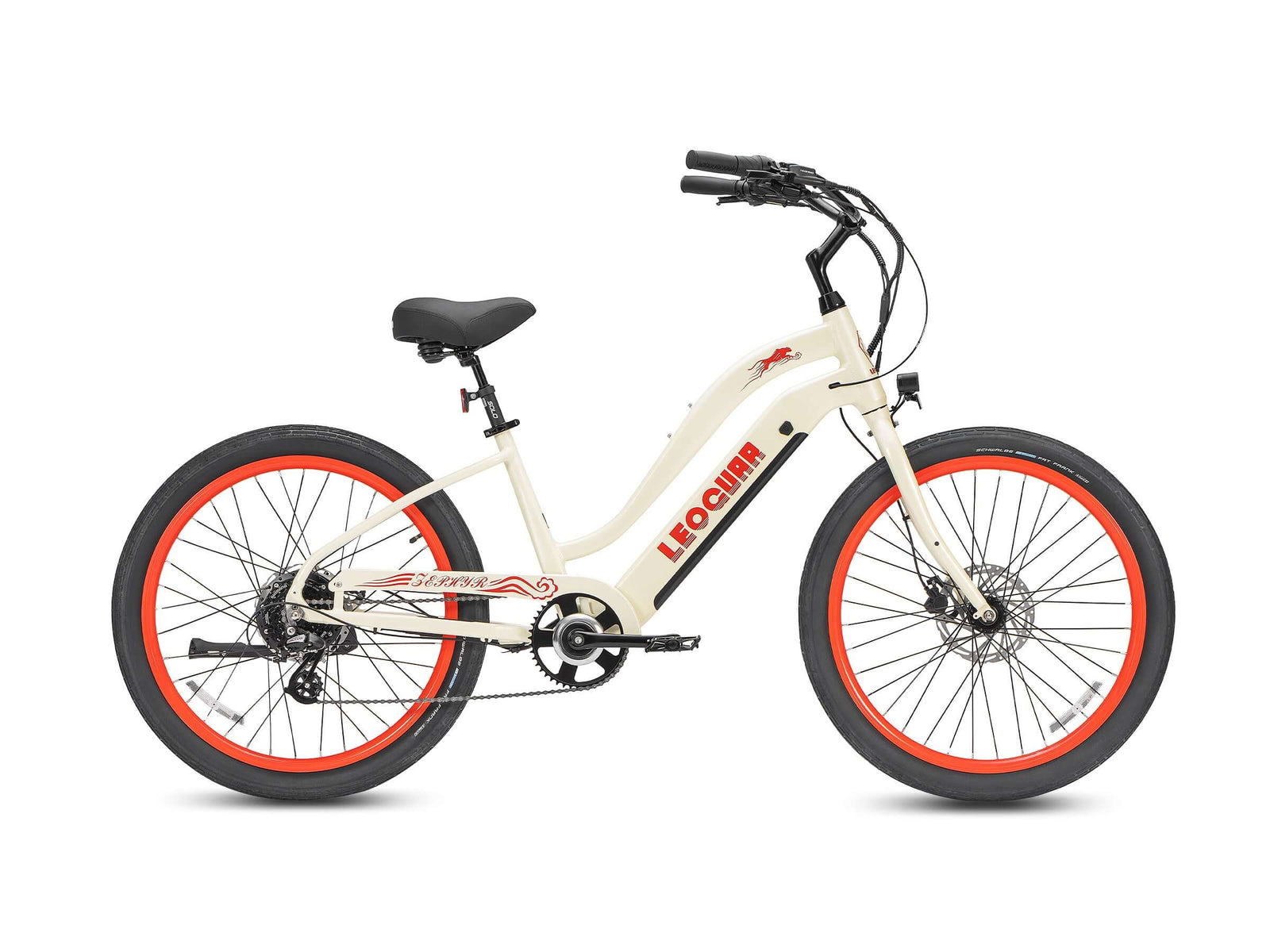
The Heart of eBike Motor Gear Systems: Understanding Planetary Gear Structures
What Is an eBike Motor Gearbox?
The gearbox in an eBike serves three main functions:
-
Reduces speed
-
Increases torque
-
Improves drive efficiency
A typical eBike motor may spin at several thousand RPM, while a bicycle wheel runs best between 60 to 120 RPM. The gearbox makes this major speed adjustment possible. And thanks to mechanical principles, lowering the speed naturally boosts torque—exactly what riders need for smooth starts and climbing hills.
Among various gearbox designs, the planetary gear system stands out as the top choice for mid- to high-end eBikes. Compared to traditional fixed-axis gears, planetary gears offer a higher gear ratio in a more compact space, while running smoother and quieter. This makes them a perfect fit for electric bikes, where size, weight, and performance all matter.
How Planetary Gear Systems Work
The planetary gear system gets its name from how it mimics the motion of planets around the sun. It has three main parts:
-
Sun Gear – the central gear
-
Planet Gears – small gears that spin around the sun gear
-
Ring Gear – a large gear with teeth on the inside, surrounding the planet gears
The planet gears—usually three or four—are evenly spaced and held together by a planet carrier, which moves as a unit.
When the motor turns the sun gear, the planet gears spin on their own axes (like Earth spinning) while also orbiting around the sun gear (like Earth’s orbit). The planet carrier collects that orbital motion and sends it out as the final output. Meanwhile, the ring gear stays fixed.
What makes this system special is how it splits the power. The input power is shared across multiple planet gears before combining again at the output. This design reduces the load on each gear and increases overall reliability and strength.
For eBikes, this means the motor can deliver more torque without needing a bigger, heavier system—helping riders power up hills and carry loads, while also improving durability over time.

Mechanical Advantages of Planetary Gear Systems in eBike Motors
Planetary gear systems offer several mechanical benefits that directly improve the performance and riding experience of electric bikes.
High Power Density in a Compact Size
One of the biggest advantages of planetary gear systems is their high power density. Thanks to multiple gears working together on the same axis, planetary gears can achieve high gear reduction ratios in a very small space. For example, a typical 250W eBike motor using a 3-stage planetary gear system can reach a reduction ratio over 20:1 within a diameter of less than 10 cm, and keep total weight under 2 kg. This compact design makes it easy to fit the motor in the rear hub or mid-drive position without affecting the bike’s look or handling.
Even Load Distribution
Another key benefit is balanced load sharing. Power is spread across 3–4 planet gears, meaning each one carries only part of the total load. This design allows:
-
Smaller gear size
-
Lower gear surface stress and wear
-
Better resistance to impact loads
Real-world testing shows that planetary systems can last 2–3 times longer than standard parallel-axis gears at the same power level—critical for daily-use eBikes.
Smooth and Quiet Operation
Planetary gears run quietly and smoothly. Since multiple planet gears engage at the same time, they cancel out vibrations and reduce noise by 10–15 dB compared to traditional gears. Their symmetrical layout also balances forces around the center shaft, reducing bearing load and vibration. The result? A more comfortable, quiet ride—especially important for city commuting and long-distance travel.
Common Planetary Gear Designs in eBike Motors
Modern eBike motors use carefully engineered planetary gearboxes to meet various power and space requirements. Both hub motors and mid-drive motors widely use planetary systems, though the design details vary.
Multi-Stage Reduction Gears
To achieve the high reduction ratios needed by eBikes (typically 15:1 to 30:1), engineers often use multi-stage planetary systems. A single stage provides about 3:1 to 10:1. For example, a 36V 250W hub motor might use three stages:
-
Stage 1: 7:1
-
Stage 2: 5:1
-
Stage 3: 3:1
This can result in a total theoretical reduction of 105:1 (though in practice it's adjusted to around 20:1). Each stage connects in sequence—sun gear drives planet carrier, which then powers the next sun gear—allowing high efficiency (often over 90%) while keeping the design compact.
Material and Heat Treatment
Durability depends on gear materials and treatment. High-end eBikes often use alloy steel gears with case hardening (HRC58–62 surface hardness). Budget models may use strong engineering plastics. Planet gears typically rotate on oil-impregnated bushings or miniature ball bearings. One German brand reported that its powdered metal planetary gears showed less than 0.1 mm wear after 5,000 hours of testing—proof of top-level material quality.
Lubrication and Sealing
Proper lubrication and sealing are critical for long-term reliability. Since eBike gearboxes are not meant for regular maintenance, they use lifetime lubrication. High-grade synthetic grease is sealed inside to ensure:
-
Smooth performance even at -30°C
-
Enough viscosity at high gear temperatures (up to 80°C)
Double sealing rings and labyrinth-style seals prevent grease leakage and keep water out. Most systems meet IP65 or higher for weather resistance, so they stay reliable in all riding conditions.

Key Performance Metrics for Choosing an eBike Planetary Gearbox
Understanding the key performance specs of a planetary gearbox is important when selecting an electric bike, as they directly affect ride quality, torque feel, and long-term reliability.
Gear Ratio
The gear ratio determines how motor speed is converted to wheel speed. Most eBike gearboxes use ratios between 15:1 and 30:1.
-
Higher ratios (25:1 or more) are better for climbing hills, providing stronger torque.
-
Lower ratios (below 18:1) are better for urban commuting, favoring speed.
However, more isn’t always better—if the ratio is too high, the motor may run outside its optimal efficiency range during high-speed riding, leading to higher energy consumption.
Transmission Efficiency
This measures how much power is lost during gear reduction. High-quality planetary gearboxes can reach 97–98% efficiency per stage, maintaining over 90% total efficiency in three-stage setups. That means less than 10% of energy is wasted.
In real-world use, better efficiency means 15–20% longer range from the same battery. One simple test: after a long climb, if the gearbox housing stays below 60°C, it's likely well-designed.
Torque Capacity
If you often carry heavy loads or ride steep hills, choose a gearbox with higher torque capacity. Some high-end models use wider gears (from 5mm to 8mm) to increase torque support—slightly heavier, but more reliable.
Noise Level
Using helical gears, high-precision machining (ISO class 6–7), and vibration-damping materials helps reduce noise.
During a test ride, listen carefully— a smooth "hum" is normal; loud clicking or rhythmic rattling could signal gear misalignment or bearing issues.
Maintenance and Common Issues
While most modern planetary gearboxes are designed to be maintenance-free, proper care can extend their life and maintain peak performance.
Lubrication Matters
Even with sealed "lifetime" grease, heavy use (e.g., frequent hill climbing, rain riding, or high mileage) can degrade lubrication.
It’s recommended to have the gearbox inspected every 5,000–8,000 km or every 2–3 years by a professional. If needed, reapply special gearbox grease—never use regular grease, as it can cause premature wear.
Sealing and Water Resistance
Water and dust resistance is crucial. After washing your adult electric bike or riding in the rain, check for signs of water entry near the motor shaft or gear casing.
If you see cracked seals or casing damage, repair immediately. Around 70% of gearbox failures are due to moisture or dust intrusion. For rough environments, consider gearboxes rated IP67 or higher.
Noise as an Early Warning
Strange sounds often mean something’s wrong:
-
High-pitched whining may point to worn bearings.
-
Clicking noises could mean broken sun gear teeth.
-
Vibration or knocking might indicate a bent planet carrier.
These issues are often subtle at low loads but become clear during climbs or acceleration. Fix early to avoid bigger problems.
Regular Checkups Prevent Bigger Failures
Even without clear symptoms, it’s smart to get a full system inspection every 12–18 months. Key checks include:
-
Gear backlash (should be under 0.2mm)
-
Axial play in bearings (under 0.1mm)
-
Insulation resistance (ensures motor windings aren’t exposed to moisture)
Routine professional checks help spot hidden issues and keep your eBike running smoothly.
Future Trends in Planetary Gearbox Technology for eBikes
As the electric bike market continues to grow and rider expectations rise, planetary gearbox technology is also advancing rapidly. Here are the key directions shaping its future:
Lightweight Design
One of the most notable trends is lightweight construction. By using high-strength aluminum housings, composite plastic gears, and hollow shafts, the latest planetary gearboxes have reduced their weight by 30–40% without sacrificing strength.
For example, a major global brand recently released a new mid-drive system with a 3-stage planetary gearbox weighing only 1.2 kg—450g lighter than the previous version. This reduction greatly improves bike handling. Some cutting-edge experiments are even testing aerospace materials like carbon fiber-reinforced carriers and magnesium alloy gears.
Integrated and Modular Design
Combining the gearbox with other motor components, like the rotor and controller heatsink, is helping shrink overall size and improve heat management.
Some advanced designs now feature fully integrated housings, eliminating the need for traditional flanges and making the system more compact.
Modular designs allow manufacturers to use a common base structure while swapping different gear sets to create multiple gear ratio versions, making it easier to support various bike models.
Smart Lubrication Systems
A promising innovation is the smart lubrication system, which uses sensors and tiny oil pumps to monitor grease condition in real time. These systems can automatically add fresh lubricant or flush out degraded oil when needed.
Another emerging approach involves self-healing coatings, where special materials automatically fill in minor gear surface wear, extending component life.
Magnetic Gear Transmission
While not part of the traditional planetary system, gearless magnetic drives are being explored as a futuristic alternative. These systems use magnetic fields to transfer torque, eliminating physical contact, mechanical wear, and noise.
Although current torque density and costs limit wide use, some high-end applications have started pilot testing. For now, planetary gearboxes will likely remain the mainstream choice for the next 5–10 years, but future versions will be smarter, lighter, and more efficient.









































Leave a comment